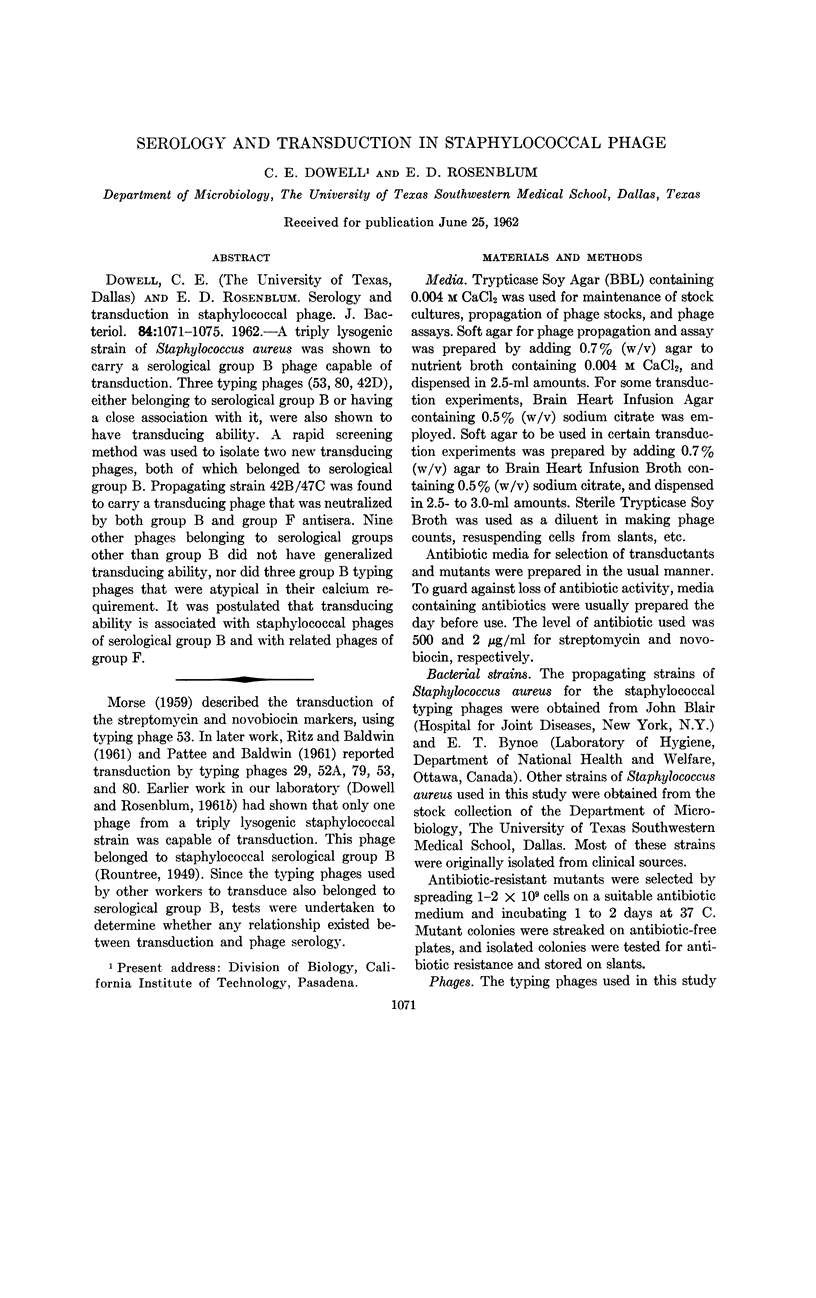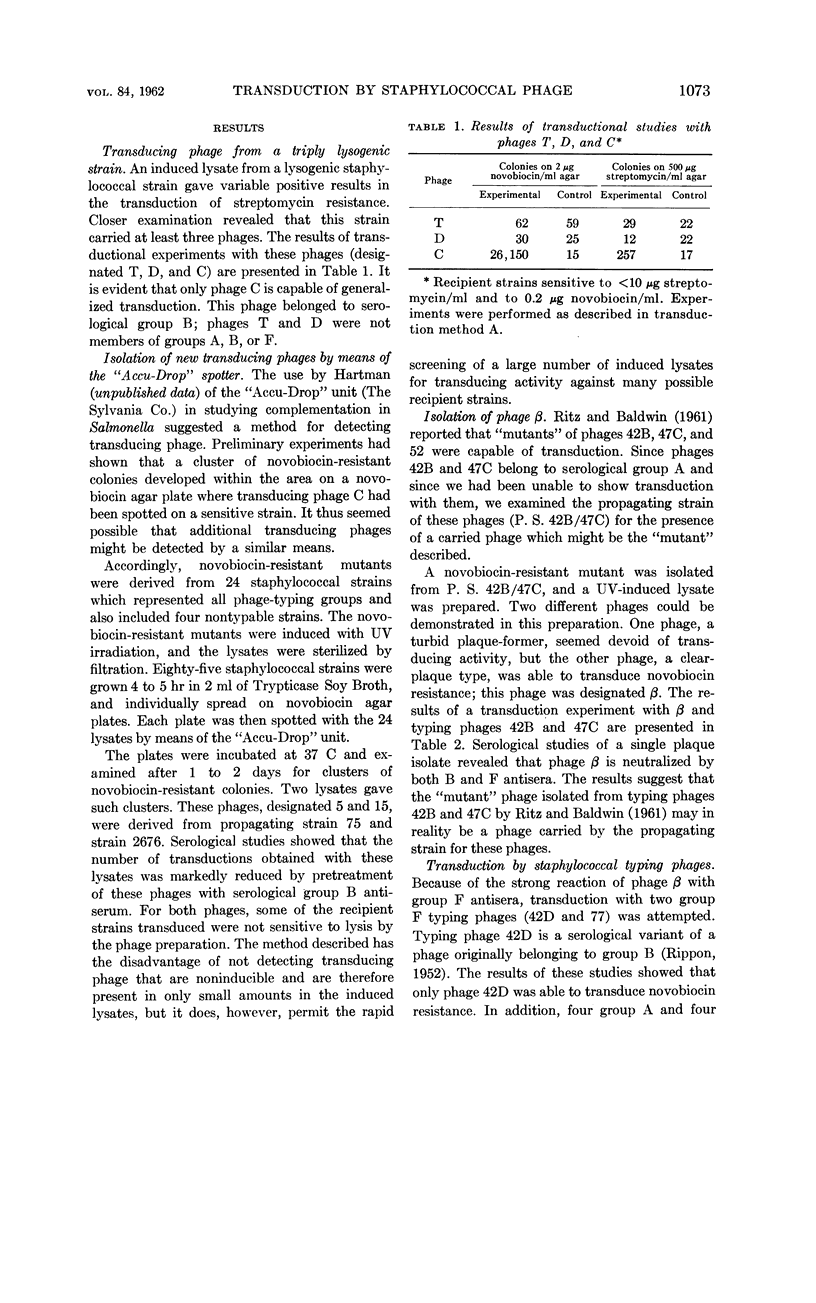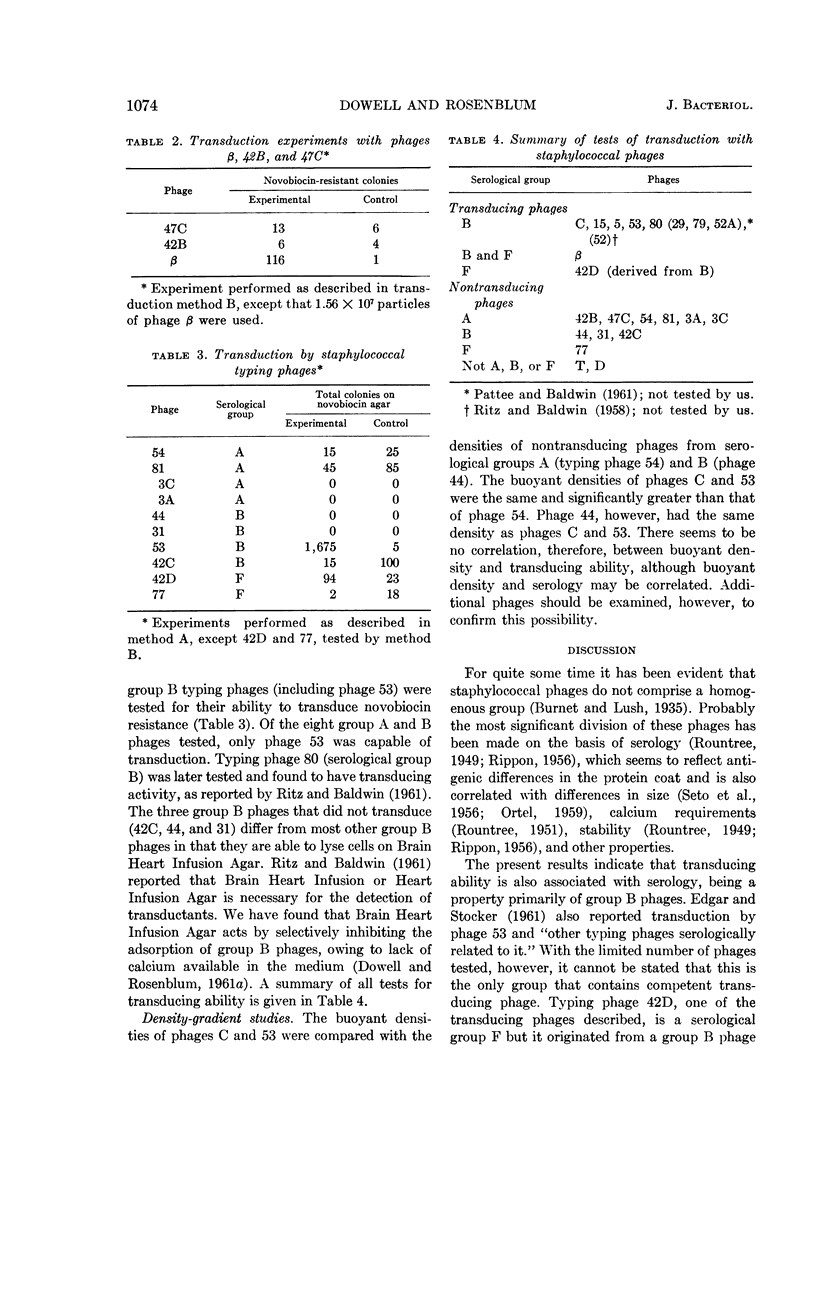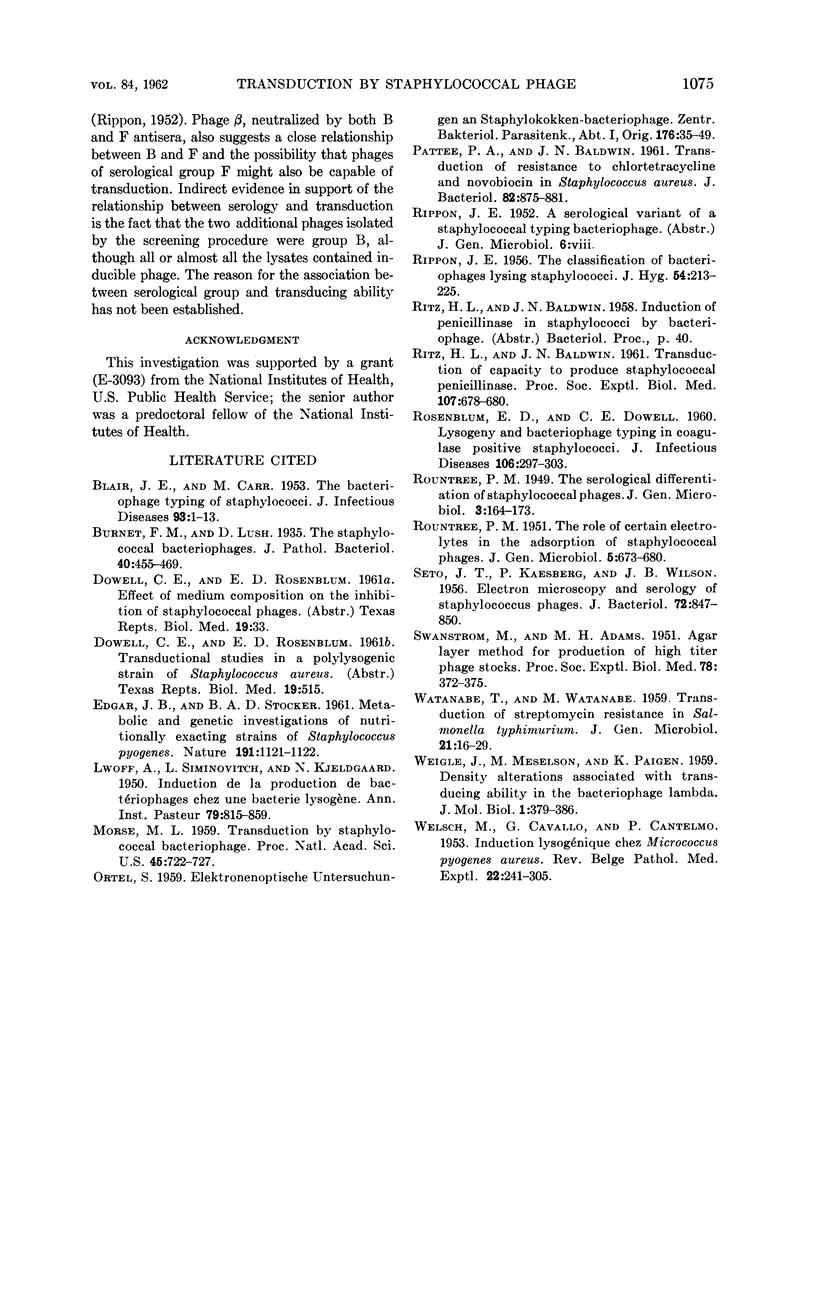Abstract
Dowell, C. E. (The University of Texas, Dallas) and E. D. Rosenblum. Serology and transduction in staphylococcal phage. J. Bacteriol. 84:1071–1075. 1962.—A triply lysogenic strain of Staphylococcus aureus was shown to carry a serological group B phage capable of transduction. Three typing phages (53, 80, 42D), either belonging to serological group B or having a close association with it, were also shown to have transducing ability. A rapid screening method was used to isolate two new transducing phages, both of which belonged to serological group B. Propagating strain 42B/47C was found to carry a transducing phage that was neutralized by both group B and group F antisera. Nine other phages belonging to serological groups other than group B did not have generalized transducing ability, nor did three group B typing phages that were atypical in their calcium requirement. It was postulated that transducing ability is associated with staphylococcal phages of serological group B and with related phages of group F.
Full text
PDF




Selected References
These references are in PubMed. This may not be the complete list of references from this article.
- BLAIR J. E., CARR M. The bacteriophage typing of staphylococci. J Infect Dis. 1953 Jul-Aug;93(1):1–13. doi: 10.1093/infdis/93.1.1. [DOI] [PubMed] [Google Scholar]
- EDGAR J. B., STOCKER B. A. Metabolic and genetic investigations of nutritionally exacting strains of Staphylococcus pyogenes. Nature. 1961 Sep 9;191:1121–1122. doi: 10.1038/1911121a0. [DOI] [PubMed] [Google Scholar]
- KAESBERG P., SETO J. T., WILSON J. B. Electron microscopy and serology of staphylococcus phages. J Bacteriol. 1956 Dec;72(6):847–850. doi: 10.1128/jb.72.6.847-850.1956. [DOI] [PMC free article] [PubMed] [Google Scholar]
- LWOFF A., SIMINOVITCH L., KJELDGAARD N. Induction de la production de bacteriophages chez une bactérie lysogène. Ann Inst Pasteur (Paris) 1950 Dec;79(6):815–859. [PubMed] [Google Scholar]
- Morse M. L. TRANSDUCTION BY STAPHYLOCOCCAL BACTERIOPHAGE. Proc Natl Acad Sci U S A. 1959 May;45(5):722–727. doi: 10.1073/pnas.45.5.722. [DOI] [PMC free article] [PubMed] [Google Scholar]
- PATTEE P. A., BALDWIN J. N. Transduction of resistance to chlortetracycline and novobiocin in Staphylococcus aureus. J Bacteriol. 1961 Dec;82:875–881. doi: 10.1128/jb.82.6.875-881.1961. [DOI] [PMC free article] [PubMed] [Google Scholar]
- RIPPON J. E. The classification of bacteriophages lysing staphylococci. J Hyg (Lond) 1956 Jun;54(2):213–226. doi: 10.1017/s0022172400044478. [DOI] [PMC free article] [PubMed] [Google Scholar]
- RITZ H. L., BALDWIN J. N. Transduction of capacity to produce staphylococcal penicillinase. Proc Soc Exp Biol Med. 1961 Jul;107:678–680. doi: 10.3181/00379727-107-26726. [DOI] [PubMed] [Google Scholar]
- ROSENBLUM E. D., DOWELL C. E. Lysogeny and bacteriophage typing in coagulase positive staphylococci. J Infect Dis. 1960 May-Jun;106:297–303. doi: 10.1093/infdis/106.3.297. [DOI] [PubMed] [Google Scholar]
- ROUNTREE P. M. The role of certain electrolytes in the adsorption of staphylococcal bacteriophages. J Gen Microbiol. 1951 Oct;5(4):673–680. doi: 10.1099/00221287-5-4-673. [DOI] [PubMed] [Google Scholar]
- SWANSTROM M., ADAMS M. H. Agar layer method for production of high titer phage stocks. Proc Soc Exp Biol Med. 1951 Nov;78(2):372–375. doi: 10.3181/00379727-78-19076. [DOI] [PubMed] [Google Scholar]
- WATANABE T., WATANABE M. Transduction of streptomycin resistance in Salmonella typhimurium. J Gen Microbiol. 1959 Aug;21:16–29. doi: 10.1099/00221287-21-1-16. [DOI] [PubMed] [Google Scholar]
- WELSCH M., CAVALLO G., CANTELMO P. Induction lysogénique chez Micrococcus pyogenes aureus. Rev Belg Pathol Med Exp. 1953 Mar;22(5-6):241–305. [PubMed] [Google Scholar]


